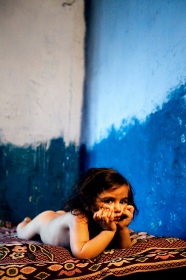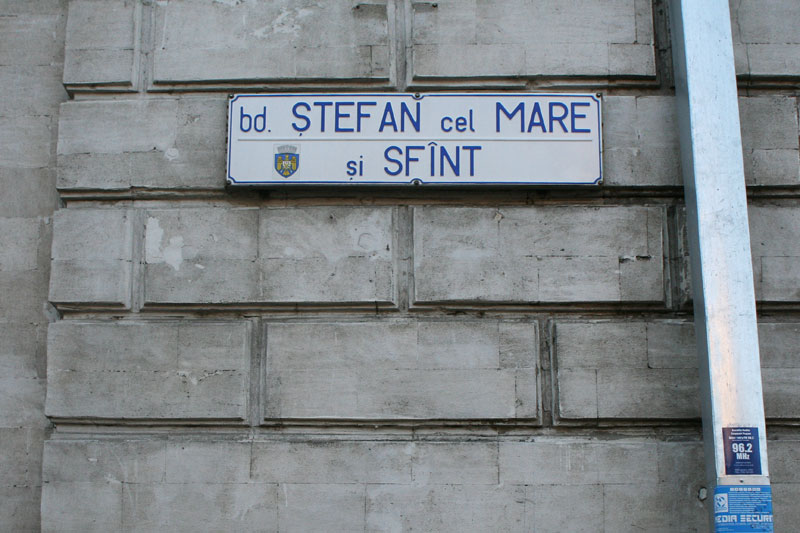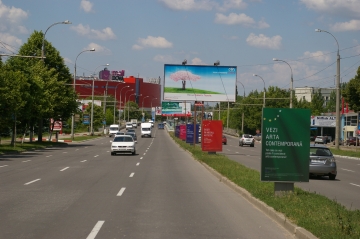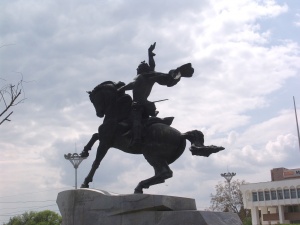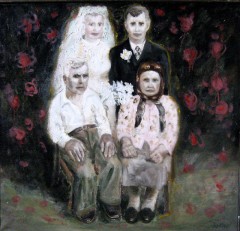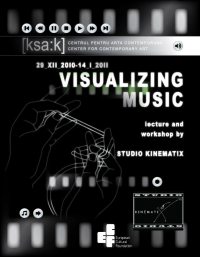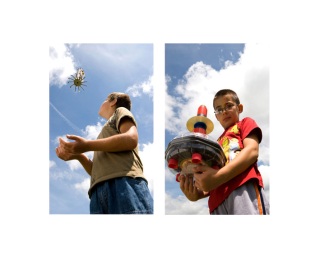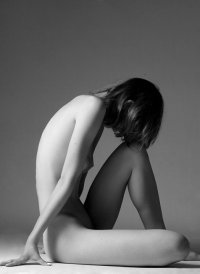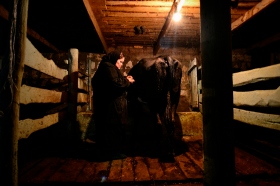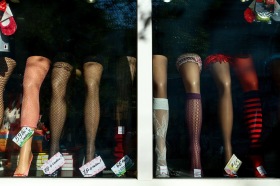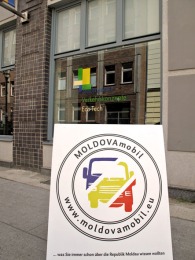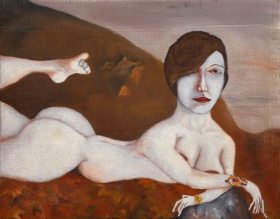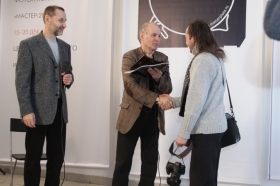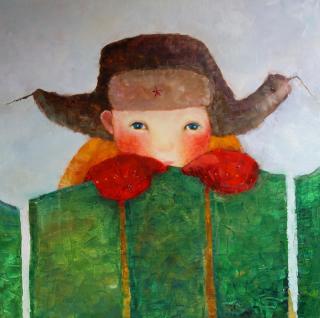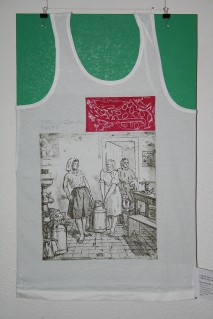[ARTPLOSHADKA]”Transcultural Identities” & “Pierre Gonnord: Portraits”, two photography exhibitions at the Welch School Galleries, Georgia State University
PRESS RELEASE
FOR IMMEDIATE RELEASE
Georgia State University, Ernest G. Welch School of Art and Design Galleries
Press Contact:
Cynthia Farnell, Director, Welch School Galleries cfarnell@gsu.edu (404) 413-5230
“Transcultural Identities” & “Pierre Gonnord: Portraits”, two photography exhibitions at the Welch School Galleries, Georgia State University
Exhibit dates: February 17 – March 18, 2011
Artist Gallery Talks: Thursday, March 10, noon- 3:30 p.m.
Artists’ reception: Thursday, March 10, 3:30 – 6:00p.m.
Transcultural Identities, an exhibition featuring photographic work by 6 internationally recognized artists, will be on view from February 17 through March 18 at the Ernest G. Welch School of Art & Design Galleries at Georgia State University.
Exhibiting artists are: Chuy Benitez, Sylvia de Swaan Tatiana Fiodorova, Priya Kambli, Annu Palakunnathu Matthew, and Wendy Phillips. (more about the artists on pages 2-5)
The public is invited to an afternoon of gallery talks with Chuy Benitez, Sylvia de Swaan Priya Kambli, and Wendy Phillips on Thursday, March 10, from noon until 3:30 p.m.. A reception and book signing will follow from 3:30 until 6:00 p.m.
Curated by Welch School Galleries Director Cynthia Farnell, Transcultural Identities addresses the effects of human migration, displacement and global commerce on the formation of collective and individual identities. The artists use lens-based images to explore multifaceted (and sometimes conflicting) identities within themselves and their communities. Farnell says:
“In a large part we form our perception of self through identification with our communities. Whether these relationships are familial, cultural, geographical, political or economic, atsome point we have all had the experience of reconciling our different selves with our diverse communities. The more we can empathize with this process in the lives of others, the more we will be able to create healthy and peaceful communities in our globalized world. Transcultural Identities is an exploration of this process through the common groundof the photographic image.”
Transcultural Identities is supported in part by the Consulate General of Mexico to Atlanta and the GSU Student Activities Fund.
(More)
Pierre Gonnord: Portraits is a selection of striking large-scale color photographs
imbued with dramatic painterly light and burnished palette that lends to the dignified subjects a timeless air. Pierre Gonnord is a French photographer living and working inSpain whose subjects are often individuals from marginalized communities. Gonnord says of his working methods:
“I choose my contemporaries in the anonymity of the big cities because their faces, under the skin, narrate unique, remarkable stories about our era. Sometimes hostile, almost always fragile and very often wounded behind the opacity of their masks, they represent specific social realities and, sometimes, another concept of beauty. I also try to approach the unclassifiable, timeless individual, to suggest things that have been repeated over and over since time began. I would like to encourage crossing a border. The history of the last few decades in the West, immigration, migrations, rural exodus, the feminist movement, the sexual revolution, economic crisis, the age of communication, globalization… all this has profoundly contributed to modifying mentalities and lifestyles to the point of severing the social fabric.
I search in the meeting points of the urban scene: streets, squares, cafes, stations, universities… then further still, in the peripheral districts, places so isolated from the world, and in more marginal settings such as prisons, hospitals, social shelters, rehabilitation centers, monasteries, or circuses. Because our society is there, as well…”
Pierre Gonnord: Portraits is supported in part by the Consulate General of France to Atlanta and the GSU Student Activities Fund. For more information and images, contact Cynthia Farnell, director at (404)413-
5230 or email at cfarnell@gsu.edu. All gallery programs are free and open to thepublic and accessible to persons with disabilities
Pierre Gonnord, “Arno”, color photograph, image courtesy of the artist
and Gallery Juana de Aizpuru, Madrid
More about the Transcultural Identities artists:
Chuy Benitez is a Chicano photographer, born in El Paso, Texas. He says:
“My family has lived on both sides of the Mexico/ United States border for generations. Growing up within a binational family provided me with a unique perspective of both nations and insightinto the experience of navigating the borderlands, or frontera, and recognizing the cultural
differences and influences of both countries. I received my Bachelorʼs in Arts in 2005 at the
University of Notre Dame in South Bend, Indiana, and was one of the first in my family to move away from the border for college…”
(More)
Benitez, who received his MFA from the University of Houston, will be exhibiting panoramic images from his Houston Cultura series in Transcultural Identities. In a statement about thework he says:
“When I moved to Houston in 2005, I found that the Mexican American community there was rarely documented and was filled with miles of uncharted territory to be encountered andphotographed…These images were made to bring appreciation to the cultural vibrance of the Mexican American community in Houston. The community is young but it is one of the fastestgrowing and one of the largest in the country. It also brings with it an interesting display of cultural survival in an extremely urban environment. I have been able to photograph many instancesof acculturation and “rasquachismo” (the creative use of limited space) in order to survive the urban sprawl of Houston; charros riding their horses in the middle of downtown Houston, youngmariachis playing in local supermarkets, auto detailers using the waiting rooms in shops as after school play rooms for their children, and flower shops turned into after hours dance-studiosas safe havens for young teens. Within each panorama, I am able to present the chaos and order of the Mexican American community in an intimate and approachable presentation.”
Chuy Benitez, “Family Chrome Shop”, panoramic color photograph, image
courtesy of the artist.
Sylvia de Swaan was born in Romania and has lived and worked in Mexico, Europe, and the United States. Now living in Utica, New York, de Swaan will exhibit diptychs from her seriesReturn in Transcultural Identities. She describes the series:
“Return (1990-2000) is an exploration of my personal history and a meditation on memory and war. It consists of a series of train journeys through post communist Eastern Europe toretrace
routes my mother, sister and I traversed as refugees at the end of World War II. Iʼm a Romanian
born Jew, survivor of the Holocaust who immigrated to the United States at age ten. The world we left behind – the world of bombed out cities and trains and refugee camps, its smells andsounds and cultural values – had little context or relevance in the new life we entered. Years later as an art student in New York City I would casually say, “oh we used to travel a lot,” toabbreviate a past too charged with suffering and too complicated to remember.
This past October I revisited my native city (Czernowitz/Ceranuti/Tschernovitz/
Chernivtsi) to attend its 600 Anniversary celebrations; acknowledging a heritage dating back to the Ottoman Empire, the Austro-Hungarian Empire, the Kingdom of Romania, the Soviet Unionand presently Ukraine. In the latter decades of Hapsburg rule until the start of the Second World War, Czernowitz was a multicultural hub of progressive ideas and high cultural values – LittleVienna it was called. It is remembered, reminisced about, mythologized, and mourned to this day by an international Diaspora of exiles and their descendents – who blog on the internet, andwho increasingly avail themselves of post Cold War open borders, to tread the streets of their
ancestors and search for clues to the fate of families lost in the maelstrom of war and genocide.”
Sylvia de Swaan, “Cartography”, silver gelatin print, image courtesy of
the artist.
Tatiana Fiodorova is an artist from the Republic of Moldova, a former Soviet state between the Ukraine and Romania. Fiodorova will be exhibiting two videos in Transcultural Identities, “IGo” and “Moldavian Land”. She is involved with the arts in her diverse roles as a fine artist, graphic designer and cultural administrator. She is keenly aware of the complexities faced by ayoung country in creating an inclusive and productive national identity. She says:
Fiodorova Tatiana, ” Moldavian Land”, video work
“As an artist from Moldova, I worry about everything that happens in my country. Since gaining independence from the Soviet Union in 1991, Moldova, as well as all post-Soviet countries whohave abandoned the socialist concept of development, have been faced with the difficulties of transition. Today the Moldovan population is caught in the fuzzy area of `transit` from one orderof life to another, while in the dark as to whether the developments will lead to something new, or that the “new” will turn out to be a “not yet forgotten” old Soviet dependence…
Fiodorova Tatiana, “I go”, video work
Priya Kambli was born in India and moved to the United States at the age of 18. Kambliʼs work is informed by this experience and her bicultural identity. She says that the process of creatingthe Color Falls Down series has helped her come to terms with some of the conflicts inherent in having ties to two cultures. She says:
“My photographs visually express the notion of transience and split cultural identity caused by the act of migration. Recently in my artwork I have been viewing this issue through the lens ofmy own personal history and cultural identity. My move from India to the United States 13 years
ago left me feeling that I do not belong fully to either culture, leaving me unable to anchor myself in any particular cultural framework. This disconnection from both cultures has changed theway
I perceive myself by forming a hybrid identity, a patching together of two cultures within one
person. Photography has been a way of bridging the gap between the two cultures while coming to terms with my dual nature…”
Priya Kambli, “Muma (Blue Dibya)”, color photograph, image courtesy of
the artist.
Annu Palakunnathu Matthewʼs series The Virtual Immigrant is also concerned with bicultural identity, in this case with the experience of call center workers in India. A selection of imagesfrom this series will be on view in Transcultural Identities. Matthew describes her concept:
“The Virtual Immigrant draws on the experience of call centers workers in India. These Virtual Immigrants become Americans for a workday but remain physically in India. To work in these callcenters, Indians study American culture and either neutralize their Indian accents and/or adopt American ones. They virtually live between cultures without leaving their country of origin. Thetangible markers of identity such as race, ethnicity, gender or class, are made more
malleable and flexible for the virtual immigrant.The work portrays the constant fluidity of this new type of immigrant, relevant as we debate the gains and losses created by the effects of digitaltechnology and globalization. The work explores the magnified cultural dislocation caused by technology’s effect on collapsing borders and shrinking distances. The experience of being aVirtual Immigrant includes sometimes shedding their Indianess for the sometimes fictional
values and similes of the American Dream that bombard them in daily life and as part of their training.”
Matthew currently lives in Rhode Island, where she is Professor of Art at the University of Rhode
Island.
(More)
Wendy Phillips is an Atlanta-based artist and Georgia State University alumna. Phillips will exhibit work from her La Limpia series in Transcultural Identities. She explains her intentions:
“This work is based in my search for the beliefs, philosophies, and healing practices that may have been those of my ancestors. Written records of world history, as well as the oralhistories of my ancestors, inform me of my West African and Native American (Iroquois) heritage. Unfortunately, the cultural and political climate in which my great-grandmothers lived didnot encourage or permit the holding on to, practice, or expression of their traditional West African and North American indigenous beliefs and healing practices, and all but a few nuancesof these were lost to me.
My research on the people of African and indigenous descent who live on the southern coast of Mexico has included oral history taking about traditional beliefs and ritual practices, andmaking black and white photographs, including portraiture and documentation of rituals and daily life in their communities. From the women there, I have learned about how a woman protectsherself from negative spiritual influences in pregnancy and after the birth of her infant, rituals for energetic cleansing and the treatment of illness, and rites marking an individual’s passagefrom this world into the next. Although the women do not identify themselves or know that they are of African descent, their rituals and practices seem to refer directly to Akan and Yoruba(African) practices. As I spent time with the Mexican women, learning about their traditions, I felt as if I had found the knowledge that my foremothers were unable to pass down to me.”
……………………………………………………………..
artploshadka@gmail.com
artploshadka.wordpress.com






